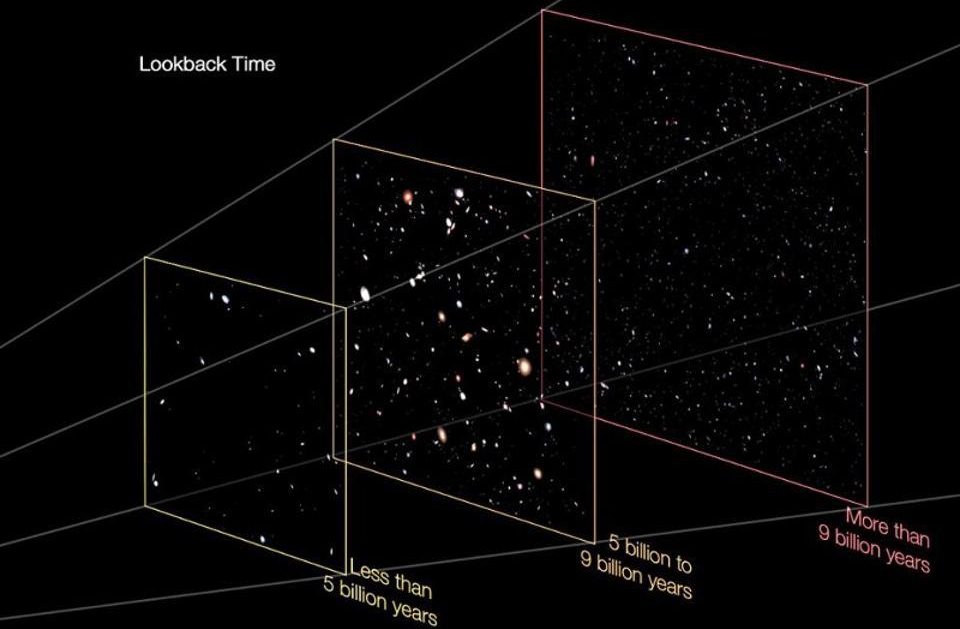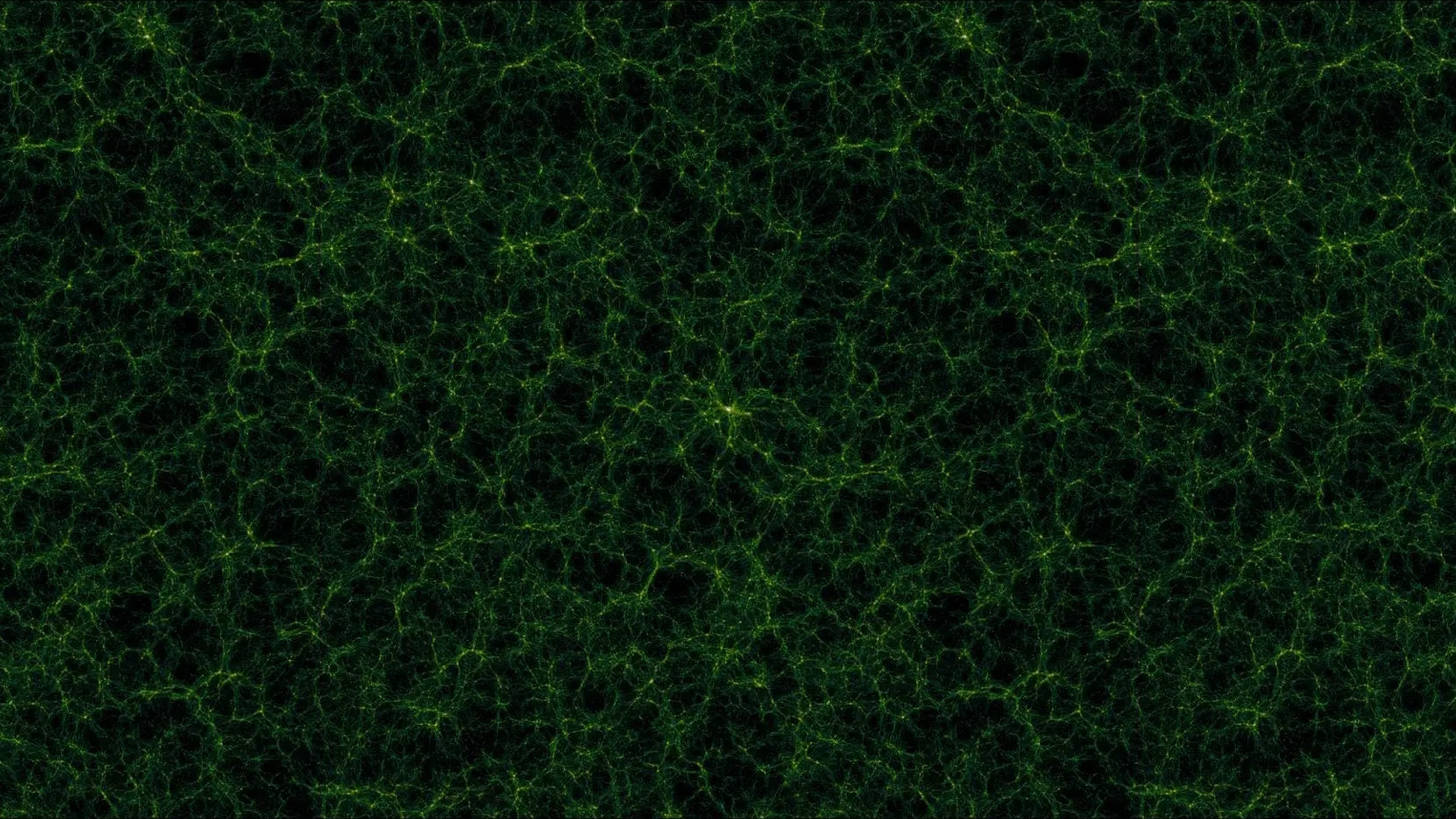10 revolutionary finds from JWST’s first 2 years of science
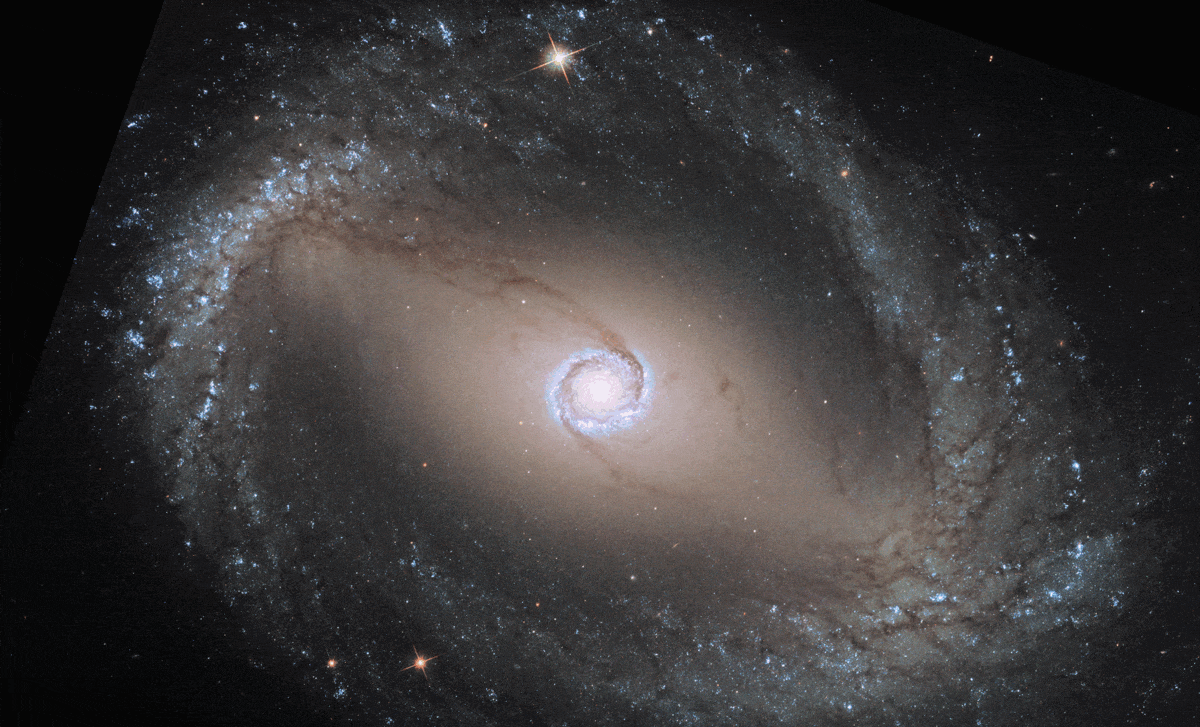
- No matter how good your leading scientific theory is, no matter how well-established it is or how many times it’s been tested, new data in an untested regime always gives you a chance for a revolutionary find.
- With two full years of science observations now under its belt, humanity’s most powerful space telescope of all-time, JWST, has shown us views of the cosmos we never could have imagined previously.
- A slew of new cosmic records have been set, as well as a series of unexpected finds that have caused many to rethink our conception of the Universe and how it grew up. Here are 10 of its greatest discoveries so far.
Although it’s hard to believe, it was only two years ago, in July of 2022, that the very first science images from JWST were unveiled to the world. Showcasing a diversity of views in a whole new light, JWST’s unprecedented combination of:
- a large, cold, infrared-optimized observatory,
- located 1.5 million km away from Earth,
- shielded from the Sun by a novel sunshield,
- and novel instruments spanning the wavelength range from 0.6 to 30 microns,
allowed us to probe the Universe, from our Solar System to the deepest cosmic depths, as never before. Almost instantly, scientists around the world realized that these new capabilities from the most powerful observatory ever launched by humanity had the potential to transform our understanding of the Universe.
Although many of JWST’s images have revealed new features that we’d never seen before — including on planets, within nebulae, around interacting galaxies, and within supernova remnants — the greatest revolutions have come when we had a set of scientific expectations that the observations then defied. These have resulted in broken records, rethinking our theoretical inputs, and in some cases, re-evaluating how we thought various objects in the Universe evolved and grew up. Now that there are two full years of science operations under JWST’s belt, it’s time to recap the top 10 revolutionary finds that have emerged from JWST-era science. (At least, so far.)
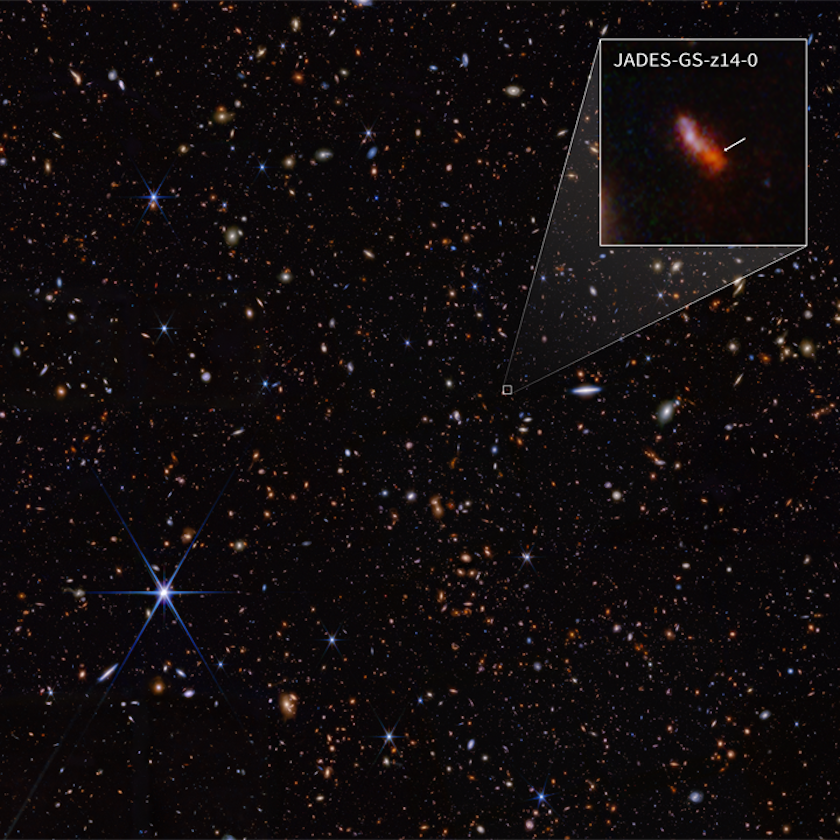
1.) A new set of records for the most distant galaxy ever.
Back in 2021, when JWST was launched, the most distant galaxy known was GN-z11, discovered with Hubble data and coming to us from just a little bit over 400 million years after the start of the hot Big Bang. As of today, GN-z11 is, perhaps fittingly, the 11th-place galaxy as far as the most distant known object goes, with all 10 of the top 10 spots presently held by JWST-discovered galaxies. The most distant one of all comes from the JWST Advanced Deep Extragalactic Survey (JADES) collaboration, which is known as JADES-GS-z14-0: whose light comes to us from when the Universe was just 285 million years old, or 2.1% of its present age.
Remarkably, some of these ultra-distant galaxies, including JADES-GS-z14-0, are not compact, but already take up a significant physical extent: thousands of light-years across in some cases. Some of these galaxies are remarkably bright, where JADES-GS-z14-0 is, for example, about five times brighter than the previous (JADES-GS-z13-0) record-holder. And while we might have expected large amounts of neutral matter to be present within them, many of these galaxies appear to be remarkably dust-poor, suggesting a different evolutionary track early on than many astronomers had anticipated. With many more years of observations ahead of it, this record will no doubt fall again several times over.
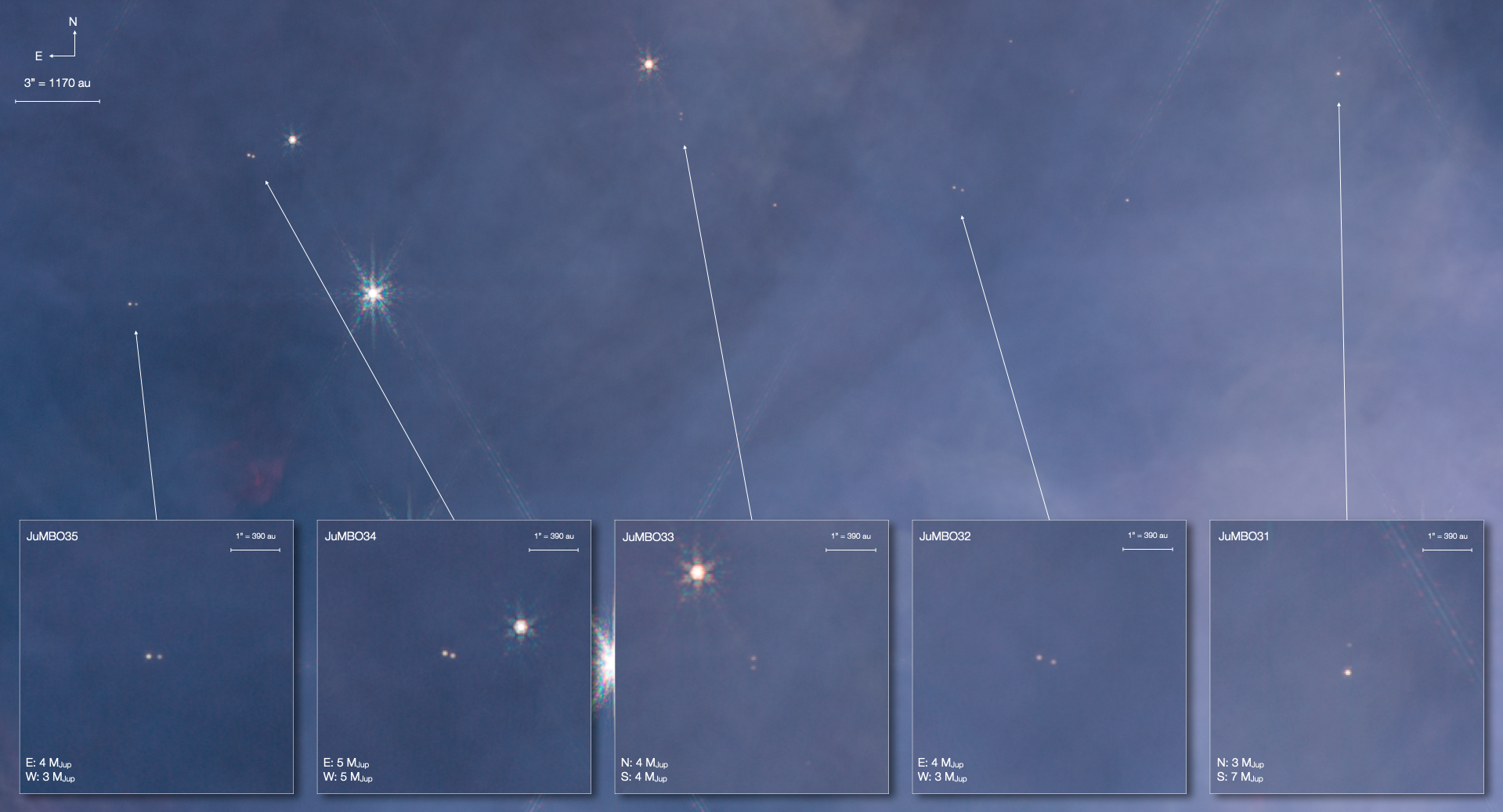
2.) Free-floating giant planets often form in binary pairs.
The closest large star-forming region to Earth is among the most famous deep-sky objects to human eyes: the great Orion Nebula, located a mere 1300 light-years away, but containing thousands of solar masses worth of material. The densest part of the nebula, the Trapezium cluster, contains approximately 2800 newborn stars located within a mere 20 light-years of each other. (For comparison, there are fewer than 100 stellar systems within 20 light-years of the Sun.) When JWST turned its eyes on it for the first time, many expected to see new stellar, gaseous, dusty, and molecular features that its high-precision, high-resolution, infrared eyes would be sensitive to.
But what we found in addition to those was a great surprise: free-floating giant planets, with no parent stars, exist in great abundance, with an impressive 9% of those giant planets bound into pairs, now known as JuMBOs, or Jupiter-Mass Binary Objects. Free floating giant planets had only been rarely seen before, and never in binary pairs, but with JWST’s capabilities, we’re discovering that they not only exist, but are common and ubiquitous. Thought to be “failed stars and star systems” that simply couldn’t accumulate mass fast enough to ignite fusion in their cores, there are hundreds of these super-Jupiter worlds found inside the Orion Nebula, and several dozens of them are bound up together in binary pairs.
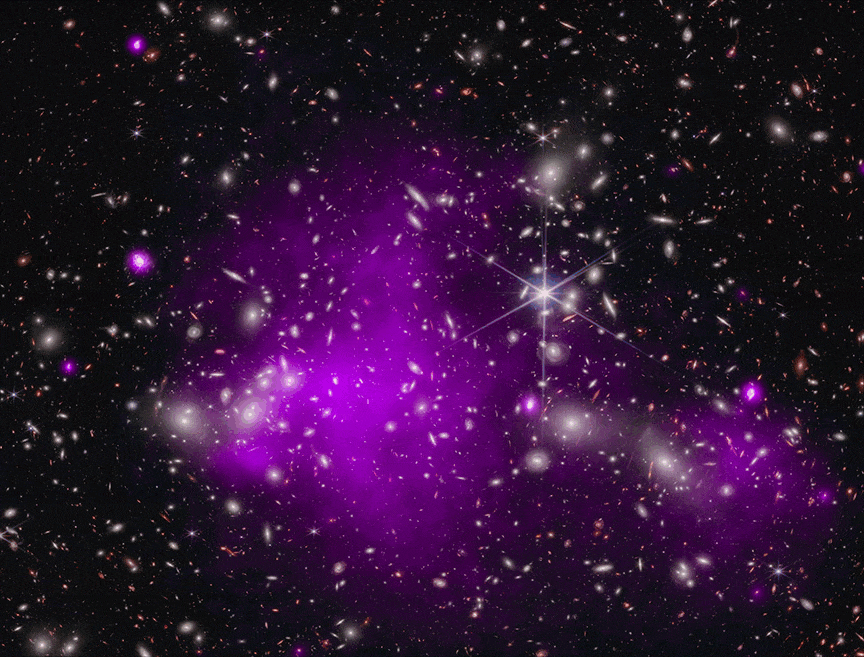
3.) Early black holes rewrite the theory of how supermassive black holes form.
Here in the late-time, evolved Universe, almost every galaxy has a supermassive black hole at its center, where the mass of that black hole is reliably around 0.1% the mass of the sum of all the stars in the galaxy. With data from JWST, however, we’ve now found a bevy of black holes that come from earlier times than ever before, with many having been detected in galaxies from the first 5% of our cosmic history. Remarkably, they are more massive when compared to the stellar mass of their host galaxies at those early times than they are even today: reaching up to 1%, 10%, or even around 100% of the stellar mass in those young galaxies.
This tells us that the supermassive black holes within these young galaxies couldn’t have formed simply from the corpses of massive stars that lived-and-died as normal, as those “seeds” are too small to grow into such supermassive black holes in such a short period of time. Instead, it requires a large black hole seed initially: somewhere around 10,000 to 100,000 solar masses, which would have likely formed from the direct collapse of matter, such as cold, colliding streams of gas. It’s rewriting our theory of how galaxies form and grow up, suggesting that perhaps massive black hole seeds even predate the earliest star-formation episodes in these objects.
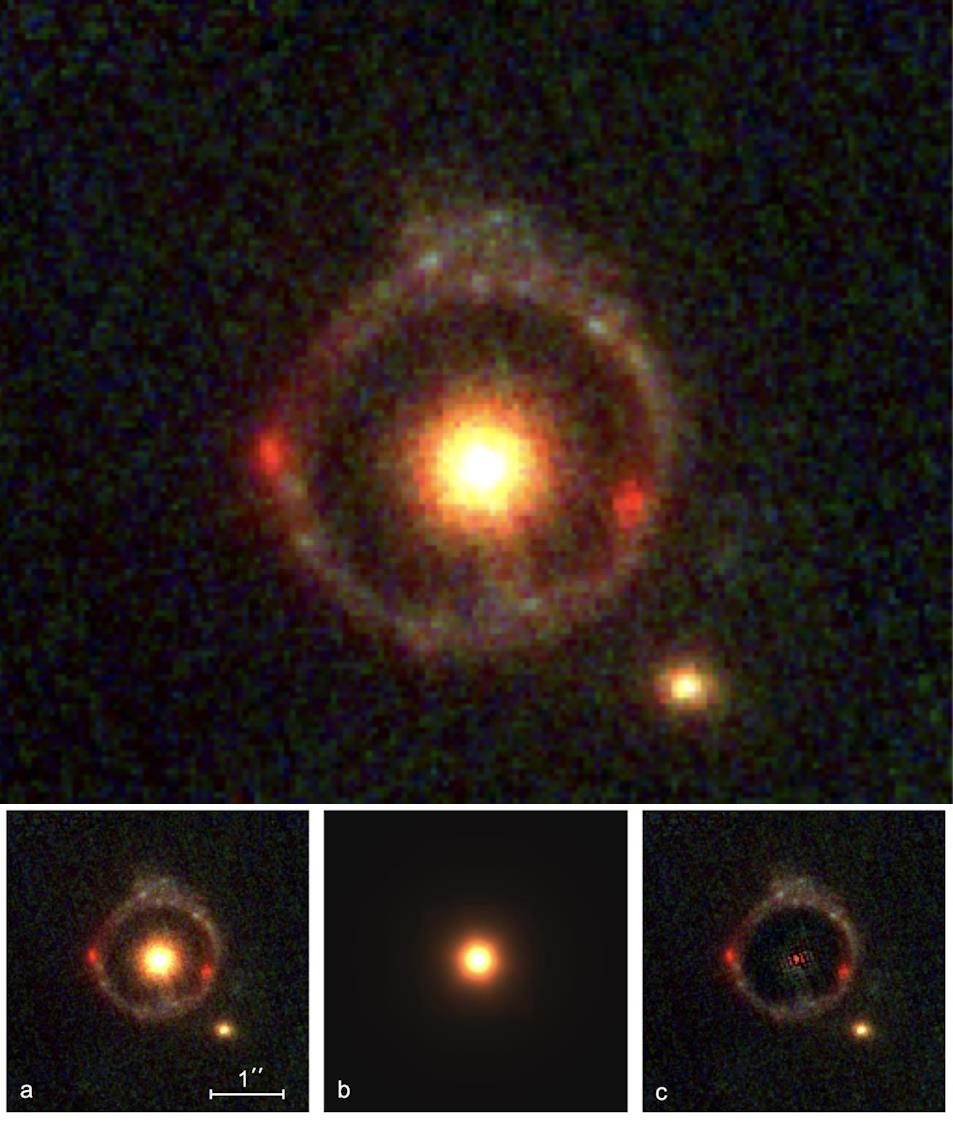
4.) A new record for the most distant gravitational lens of all.
In order to create a gravitational lens, you need three things, all together:
- a massive foreground object, which distorts spacetime and acts like a lens,
- a luminous background object, whose light passes through the lens and is bent, magnified, and distorted by it,
- and an observer — i.e., us and our telescopes — at the proper position to observe this lensing phenomenon.
Although gravitational lensing was one of the earliest predictions of Einstein’s general relativity, the first gravitationally lensed system wasn’t discovered until 1979. Today, lenses are common, but are usually induced by enormous foreground masses, such as from galaxy clusters.
However, a fascinating discovery in 2023 revealed a compact, distant galaxy located an impressive 17 billion light-years away serving as a gravitational lens for an even more distant object, whose light was then stretched into a perfect circle (known as an Einstein Ring) by these lensing effects. The distance to this lens not only set a new all-time record, but smashed the old one by more than 2 billion light-years. With only a tiny portion of the entire sky — less than 0.01% — surveyed by JWST, it’s overwhelmingly likely that much more distant gravitational lenses are out there. Hopefully, in time, JWST will extend its own record many times over on this front, too.
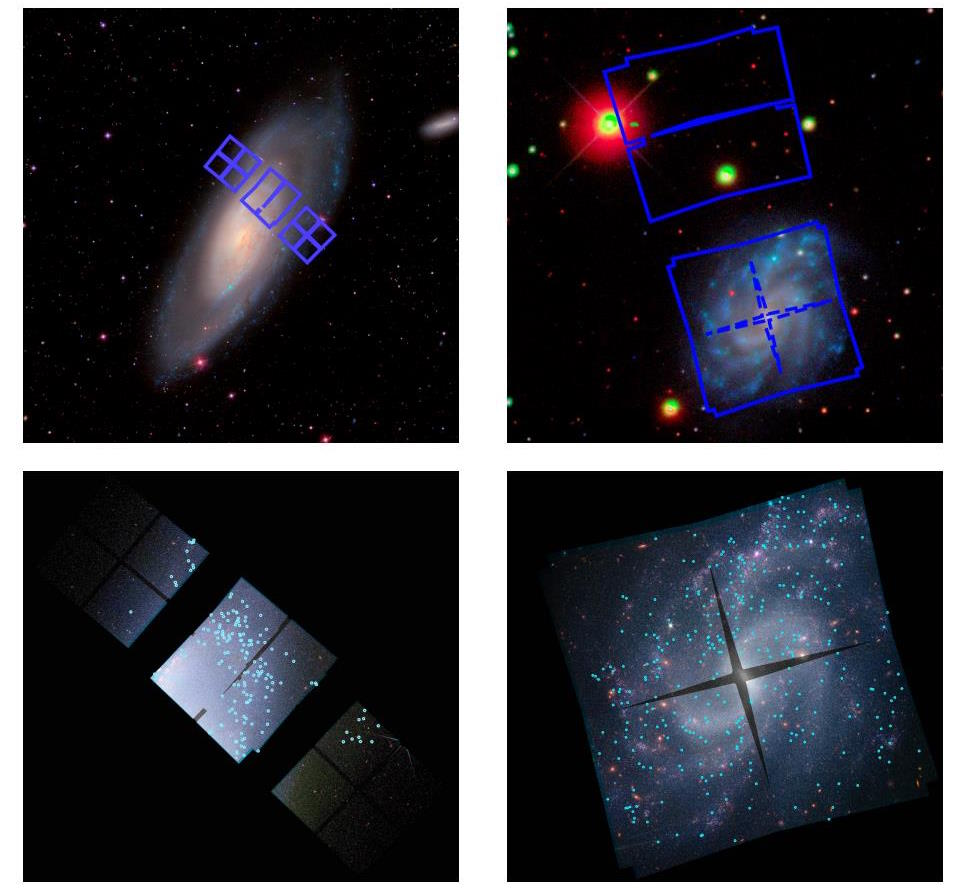
5.) The controversy over the expanding Universe — the Hubble tension — intensifies with new JWST data.
One of the great controversies in modern cosmology and astrophysics today is simply over the question of the expanding Universe: how fast is it actually expanding at present? If you determine the expansion rate with methods based on an early relic imprinted from the Big Bang, such as the “wiggles” in the CMB or correlations in distant galaxies found in large-scale surveys, you get one value: around 67 km/s/Mpc, with a very small error. If you instead determine the expansion rate by constructing a distance ladder, such as:
- using parallax to measure the distance to nearby stars,
- using space telescopes to measure those same types of stars in nearby galaxies,
- and then using supernovae in those galaxies and everywhere to infer even great distances,
you get a very different answer: 73 km/s/Mpc. With an uncertainty on both of these values of less than 1%, but a difference of about 9%, this cosmic puzzle is known as the Hubble tension.
One of the main sources of uncertainty in the distance ladder method came from measuring individual stars in nearby galaxies, as our previous best data (from Hubble) suffered from the effects of what we call field crowding: where many stars overlap and it becomes difficult to disentangle the individual brightness of the relevant stellar systems. With JWST, however, field crowding is a thing of the past, as these stars are now individually resolvable at high resolution, and those uncertainties have all but disappeared. The Hubble tension not only remains but has intensified, and claims that new observations could resolve this tension have been thoroughly debunked.
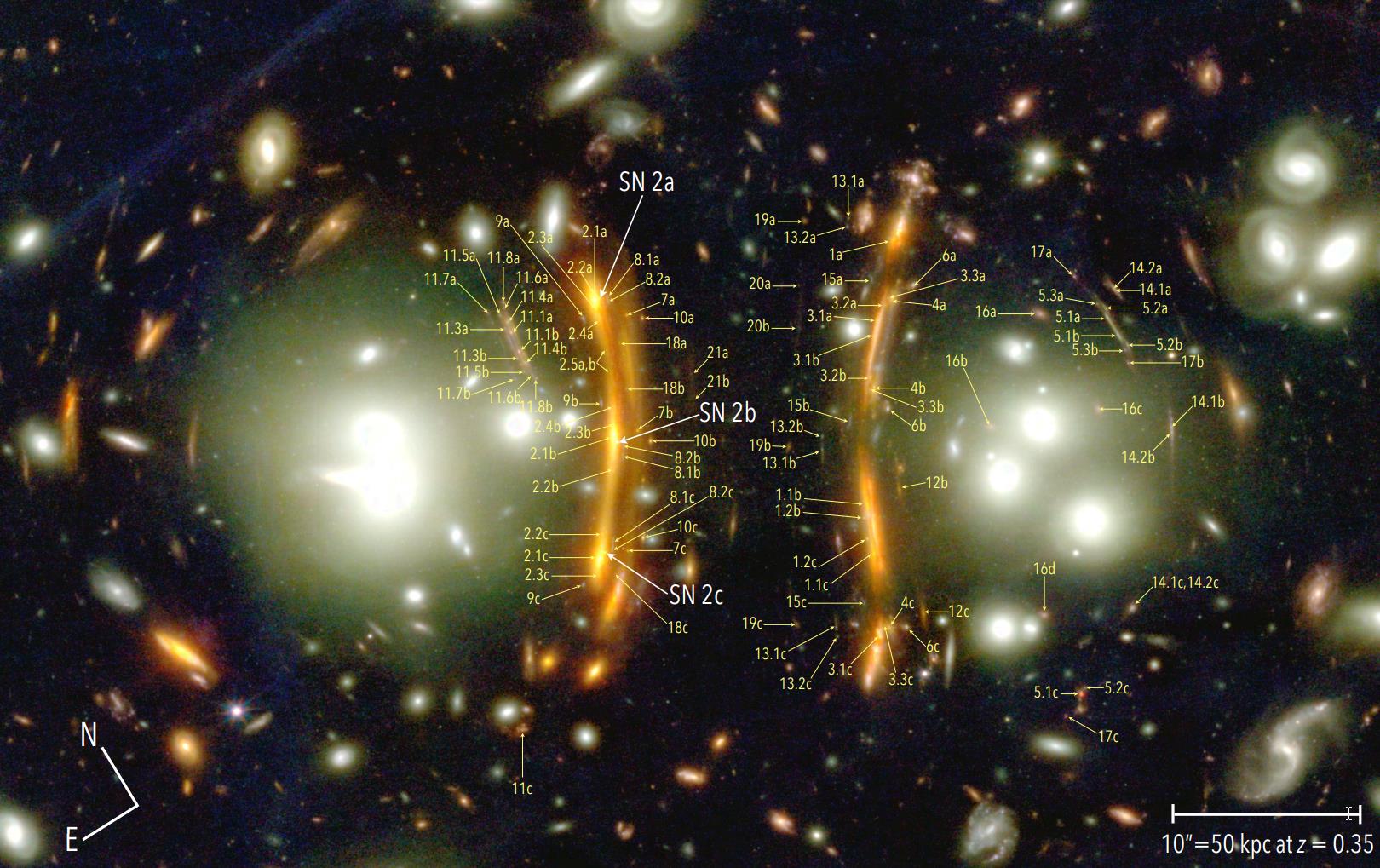
6.) A discovered triply-imaged supernova does provide real hope for resolving the Hubble tension.
However, using a trick of gravitational lensing, JWST provides astronomers with a novel, powerful method that could truly be an incredible asset for determining the true expansion rate of the Universe: multiply-imaged galaxies that contain a type Ia supernova detonating within them. The key is in understanding that, with gravitational lensing, light from the same object can be bent into many different paths by the foreground (massive) lens, and if those paths have different lengths from the emitting object to the observer’s eyes, that critical light will take different amounts of time to arrive at the observer.
This was observed to happen, directly, by JWST in an object simply known as “Arc 2” as lensed by the galaxy cluster PLCK G165.7+67.0. A type Ia supernova — exactly the type that distance ladder studies rely on — was observed to go off in a galaxy located 16 billion light-years away three separate times, as three rounds of observations:
- on March 30, 2023,
- on April 22, 2023,
- and on May 9, 2023,
showed the same supernova occurring on three-peat: in each of the three images. With 20 other multiply lensed systems in the background of this one galaxy cluster, JWST gives us true hope that using the time delays from multiply-imaged type Ia supernovae could give us a new method for measuring the expansion rate of the Universe, with the possibility of resolving the Hubble tension hanging in the balance.
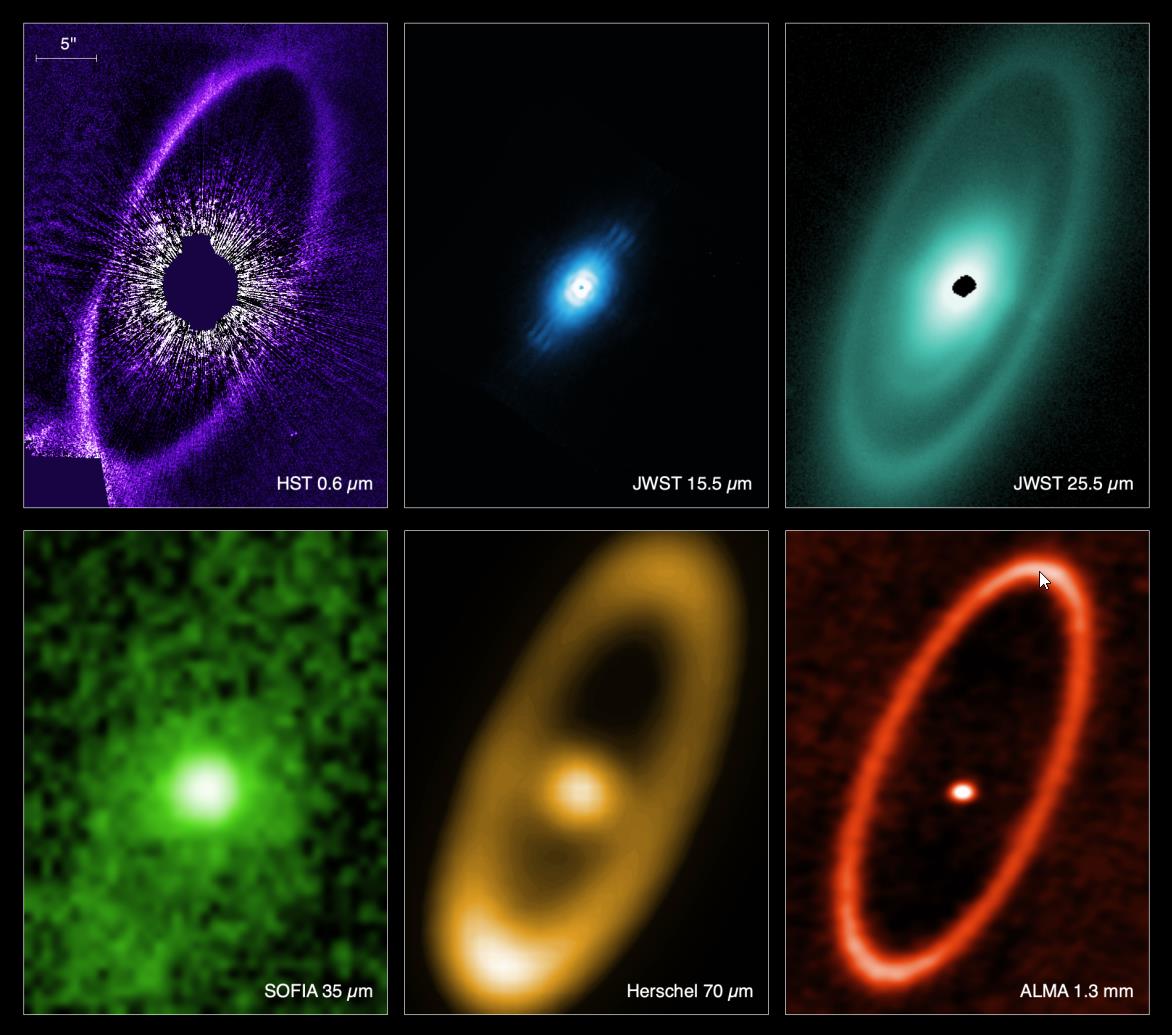
7.) Some stellar and planetary systems have three major belts, not just two like our own Solar System.
When you think about the structure of our Solar System, you likely note that there are inner, rocky planets, outer, giant planets, an asteroid belt separating them, and then an icy belt of objects beyond the planets, the Kuiper belt, which then gives way to the Oort cloud in our outskirts. Back in 1990, we thought this configuration was typical, and that our own Solar System would serve as the prototype for the other types of stellar and planetary systems that were out there. Now that we’ve discovered over 5000 exoplanets, we know that isn’t the case, as planets of all masses can be found at any distance from their parent star, with mini-Neptune sized worlds — none of which exist in our Solar System — being the most common type discovered so far.
But nothing could have prepared us for what JWST saw when it looked at Fomalhaut: a young, Sun-like star still surrounded by a debris disk. Sure, there was an inner disk, corresponding to the location of inner planets and the asteroid belt. There was an outer belt as well, likely corresponding to our own Kuiper belt. But in between them was a great surprise: an intermediate belt, with no known analogue in our own Solar System or in any other system. It’s also huge, and around 10 times thicker than our own asteroid belt. With long-term radial velocity monitoring, NASA’s planned Habitable Worlds Observatory, or even the advent of 30-meter class ground-based telescopes, we just might discover a planetary system around this star unlike anything we’ve ever seen (or even imagined) before. The Universe continues to surprise us.
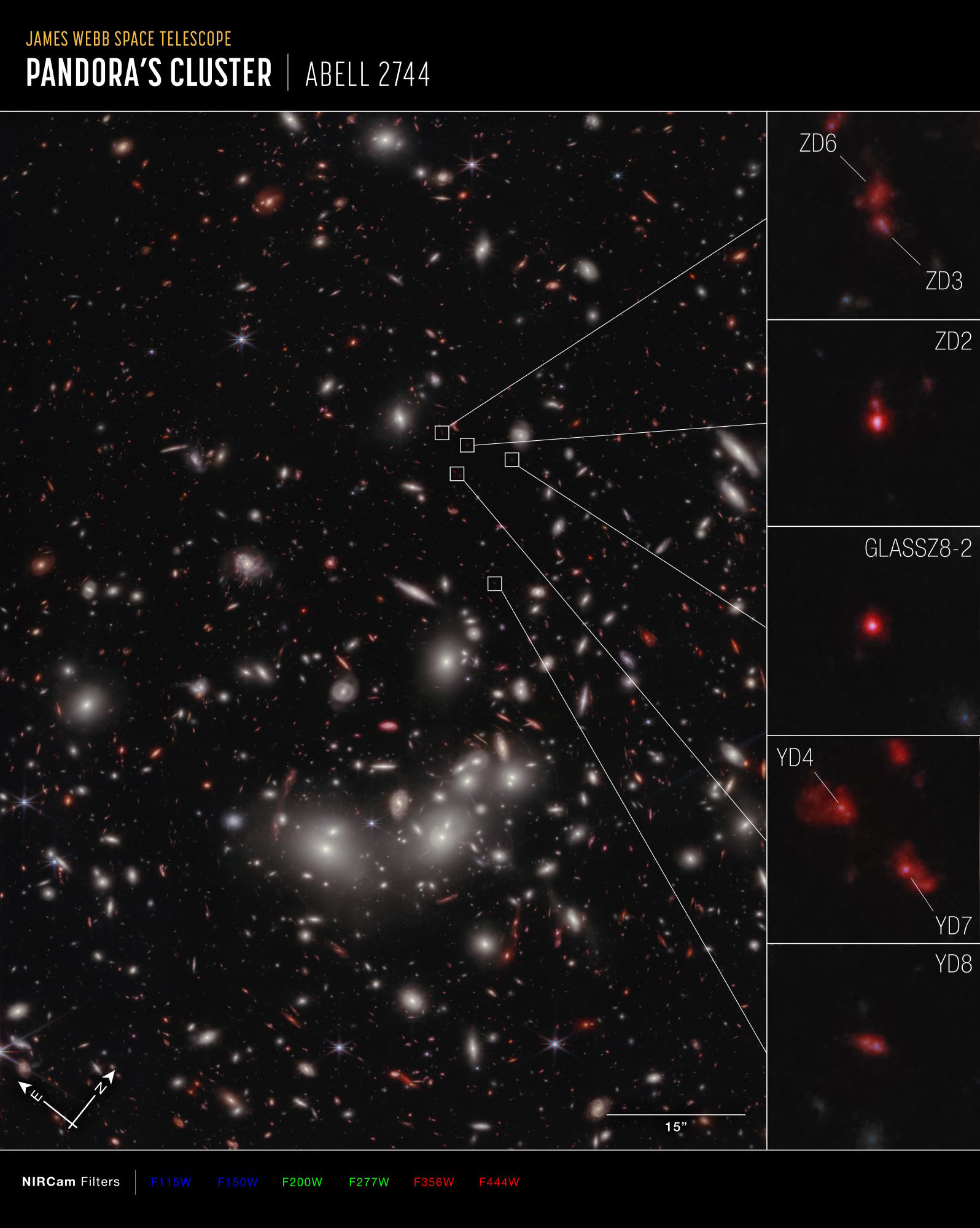
8.) The most distant galaxy cluster, ever, forming just 650 million years after the Big Bang.
In our Universe, structure forms hierarchically: first on very small (stellar) scales, then on larger (galactic) scales, and finally on grand cosmic scales (galaxy groups, galaxy clusters, and the cosmic web), as the force of gravity itself is limited by the speed of light. One of the great places to search for ultra-distant galaxies and even larger-scale structures is behind large, massive galaxy clusters, as the cumulative amount of mass in these objects gravitationally lenses background sources of light: enhancing and magnifying those faint, distant objects. And it was in the background of galaxy cluster Abell 2744, a part of the GLASS field, that seven independent galaxies have all been found clustered together: evidence of the earliest proto-cluster of galaxies ever found.
Although this region of space was imaged by Hubble before — and one of the galaxies within it, identified as YD4 in the image above, had been seen by Hubble previously — it was only because of JWST’s spectroscopic capabilities that a telltale signature of doubly-ionized oxygen could be identified, pinpointing the distance to each galaxy exquisitely. As JWST showed us, YD4 is actually not a member of this galaxy cluster, but is rather an even more distant background object. The other seven galaxies highlighted in the inset boxes, however, are all at the same redshift (z=7.88) as each other, making this the youngest proto-cluster of galaxies ever to be identified.
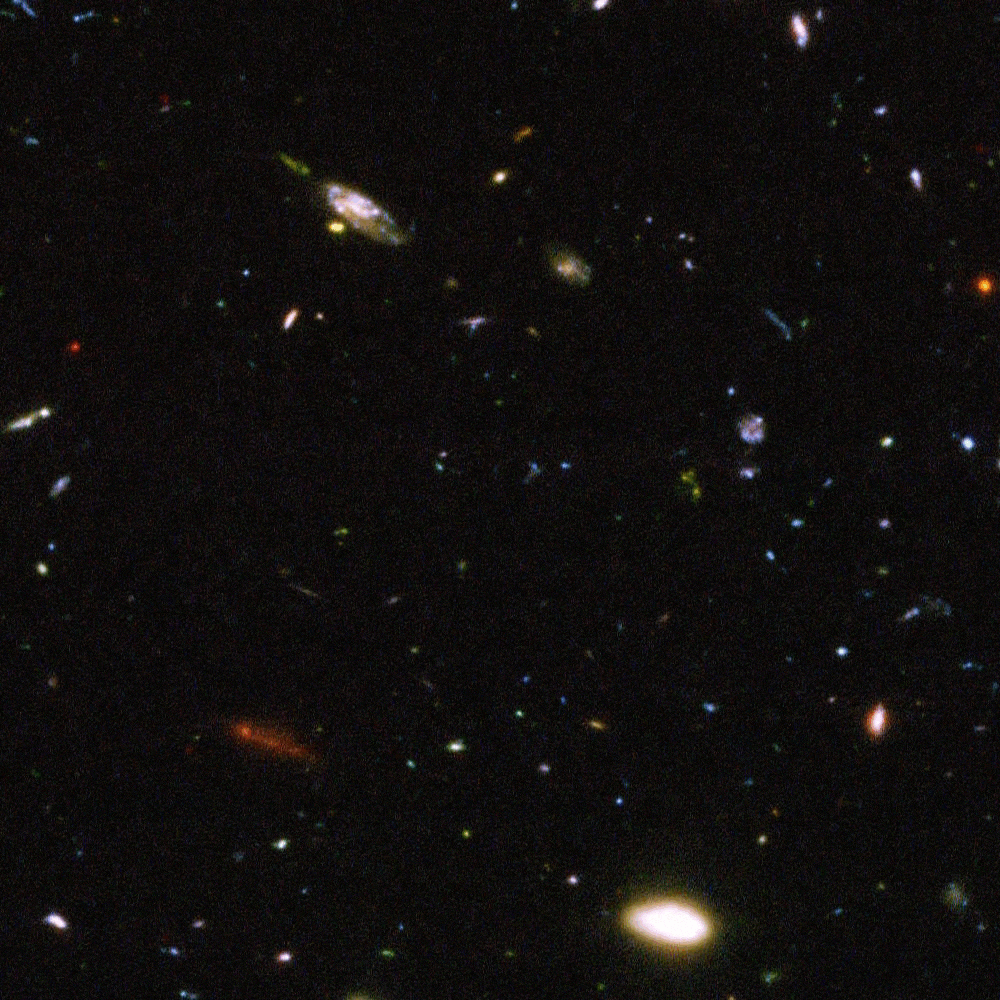
9.) Smashing all previous limits, including those set by the Hubble Space Telescope.
Prior to JWST, our deepest views of the Universe came from the Hubble Space Telescope. An enormous amount of time was spent viewing the same region of sky, revealing deeper, fainter, more distant objects than ever before. The original Hubble Deep Field was later superseded by the Hubble Ultra-Deep Field, and was eventually added onto to produce the Hubble eXtreme Deep Field, with a whopping 23 cumulative days of observing time. It was in this region of space that the most distant Hubble galaxy of all, GN-z11, was found.
And then, looking at this same region of space in under one-tenth the time as Hubble, JWST not only revealed a very similar set of features to Hubble, but many features that were invisible to Hubble: deeper, fainter, and more distant galaxies than even the limits of Hubble could reveal. The key combination of:
- superior resolution (coming from a larger primary mirror),
- less thermal noise in the data (coming from being colder and more distant from Earth),
- and longer wavelength sensitivity (with infrared optimization and a novel suite of instruments),
all helped reveal galaxies that Hubble could not in that same region of space, despite only having 20 hours of total JWST observing time compared to ~23 days of Hubble time. It was its unique design that gave JWST these powerful capabilities, and now scientists are reaping fruits that we didn’t even know would be present in these previously unseen realms.

10.) The early Universe is full of bright, brilliant starbursts inside its young galaxies.
One of the early puzzles from JWST data was this: why, when we look out at the Universe at high-resolution in these long wavelengths of light, do we see so many bright, massive, early galaxies? While some astronomers were quick to draw rash conclusions, claiming that this violated our expectations based on a Universe filled with dark matter and dark energy, many astrophysicists engaged in the hard work of explaining the physics behind what we were seeing, and why. Remarkably, there were three reasons, all combined, that are required to understand JWST’s observations.
- JWST was kept cleaner than any other observatory ever, and as a result, its pristine optics are overperforming, returning brighter, sharper views than it was even designed for.
- Earlier simulations were performed at insufficient, low resolutions, but when higher-resolution simulations are conducted, the initial, albeit rare, severe overdensities can grow rapidly enough to explain many of the brightest, earliest galaxies.
- And finally, early galaxies likely underwent periods of bursty star-formation, leading to a very bright luminosity output that lasts for just a few million years, rather than the observed brightness representing the cumulative amount of star-formation that’s occurred over a galaxy’s lifetime.
By combining all three of these effects, simulations can now reproduce JWST’s observed abundance of bright, early galaxies, making sense of the Universe once again.


